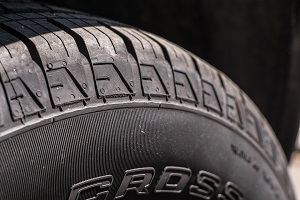When you look at a tire, you might think it's just a simple piece of rubber. However, the modern tire is a marvel of engineering, packed with advanced materials and technology that make driving safer and more efficient. Gone are the days when tires were just hollow rings of rubber; today’s tires are designed with precision to meet various needs.
Tread
The outermost part of the tire, the tread, is the patterned layer you see. It plays a crucial role in grip and traction, especially in different weather conditions. The tread design depends on whether the tire is meant for performance, all-season use, or off-road adventures.
Belts (or Belt System)
Below the tread lies the belt system, usually made of steel. These belts give the tire its strength and stability, ensuring that it remains flat and doesn’t bulge under pressure. This helps improve handling and durability, allowing the tire to last longer.
Body Ply
Another essential component is the body ply, which sits beneath the steel belts. Made of layers of polyester fabric covered with rubber, the body ply supports the structure of the tire, helping it withstand the weight of the vehicle and maintain its shape.
Bead
On either side of the tire, there’s the bead, which is a combination of wire and rubber. The bead seals the tire to the rim, preventing air leaks and keeping the tire securely attached to the wheel.
Inner Liner
Inside the tire, the inner liner is responsible for retaining air. To ensure no air escapes, this layer is crafted from materials that are impermeable to gases.
Sidewall
The sidewall is the rubber portion on the sides of the tire. It protects the tire from damage caused by curbs and other road hazards while also providing information about the tire’s specifications, such as load capacity and speed rating.
Each component of the tire has evolved over time to enhance performance and longevity. Today’s tires can last up to 100,000 miles, a vast improvement from the 20,000-mile lifespan of bias-ply tires back in the 1970s. This progress is a testament to the dedication of tire manufacturers who continue to innovate.
Book your tire service appointment today!

